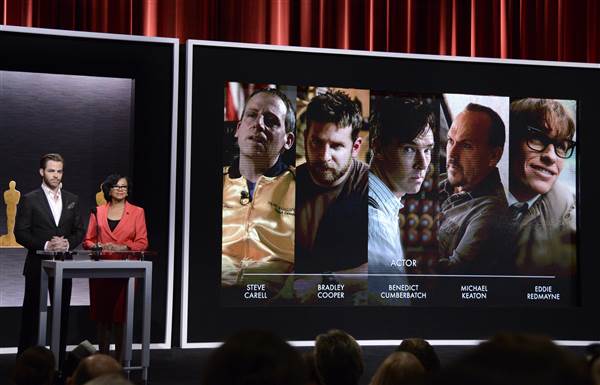
Hollywood failed to increase the number of members of under-represented populations both in front of and behind the camera in 2015, according to a report released today by the Media, Diversity, and Social Change Initiative at the University of Southern California (USC) Annenberg School for Communication and Journalism.
"We're seeing entrenched inequality," Stacy L. Smith, a USC professor and the study's lead author, told the Associated Press. "Whether we're studying gender, race, ethnicity, LGBT or characters with disabilities, we're really seeing exclusionary forces leaving out anybody that's not a straight, white, able-bodied man. Despite all the chatter and all the activism and all the press attention, it's another year where the status quo has been maintained."
The report, which has conducted near-annual polls dating back to 2007, analyzed the 100 top-grossing films of 2015 in North America, finding that, out of 4,370 speaking or named characters, 68.6 percent were male and 73.7 percent were white.
According to the study, 32 percent of the films analyzed featured a female lead or co-lead, an 11 percent increase from 2014, and female characters were three times more likely to be shown in "sexually revealing clothing," 30.2 percent versus 7.7 percent.
RELATED: Report: More Than Half of Hollywood Projects Don't Feature Asians
In the 100 films analyzed, 12.2 percent of speaking characters were Black, 5.3 percent were Latino, 3.9 were Asian American, less than one percent were Middle Eastern, less than one percent were Native Hawaiian or Pacific Islander, and 3.6 percent were of other or mixed race, according to the report. The numbers were largely unchanged from USC's first study in 2007.
Of the 100 movies, only 14 featured a lead or co-lead of color, with nine being black, one Latino, and four being mixed race. There were no Asian-American leads or co-leads in the 2015 sample.
Of the 4,370 characters, there were 19 gay men, seven lesbians, five bisexuals (three were men, and two were woman), and there was one transgender character, according to the report.
This year's survey also introduced the tracking of characters with disabilities: 2.4 percent of the sample had some form of disability, according to the study.
RELATED: Latinos in Hollywood: Few Roles, Frequent Stereotypes, New Study Finds
Behind the camera, diversity numbers were lower, with 81 percent of the 1,365 directors, writers, and producers being male, according to the report. Of the 107 directors present, 3.7 percent were Black and 5.6 percent were Asian American, according to the report. No black or Asian female directors were present in 2015's top-100 grossing movies in North America. The report did not release analysis on the race of directors beyond Blacks and Asian Americans.
The films sampled were produced before the second #OscarsSoWhite backlashagainst the Academy of Motion Picture Arts and Sciences following a second year of all-white acting nominations at the Oscars in February. Following the backlash, the Academy announced that it would implement new rules to double the number of women and people of color among its membership. In June, they extended membership invitations to 683 filmmakers, 41 percent of whom are people of color, according to the Academy.
"The prequel to OscarsSoWhite is HollywoodSoWhite," Smith told the Associated Press in February following the release of a separate study on Hollywood diversity. "We don't have a diversity problem. We have an inclusion crisis."
by CHARLES LAM